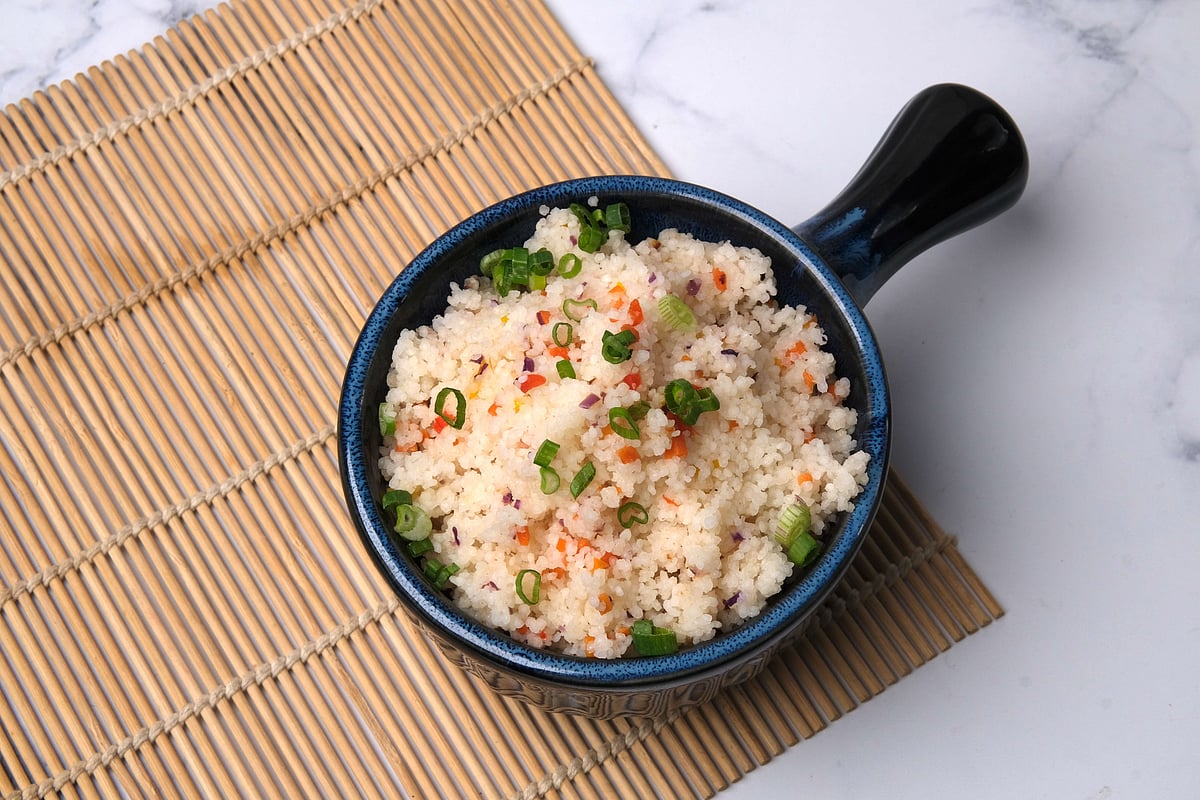Cultivated since Indus Civilisation, millets have been the traditional food of people in Asia and Africa. Millets are simple and non-fussy grains, but with loads of health benefits, which can be grown on marginal land in arid zones of temperate and tropical regions. Top five Indian states for the cultivation of these grains are Uttar Pradesh and Haryana for bajra, Maharashtra and Karnataka for ragi and bajra, and Rajasthan for bajra and jowar. To make these cereals a part of your daily diet implies you are on the road to good health. The underrated millets are, in actual, superfoods brimming with proteins, fibre, iron, and other minerals. They keep many ailments at bay. Dietician Pooja Thacker mentions, “Your sweet tooth and 4 pm cravings for something crunchy can be tackled in a healthy way by substituting refined flour with jowar flour for crackers, gluten-free papdi chaat, ragi laddoos or millet theplas.”
Browntop/chota kangni: Troubled with gastric ulcers, respiratory and arthritic problems? Indulge in this millet which also detoxifies the system. Also recommended for colon cancer patients. “Used in traditional mithais earlier, they are now an ingredient of breakfast cereals and ready-to-eat snacks,” says co-founder Murti Tamak of Millettude.
Amaranth/ Rajgira: High in proteins, it has the added advantage of all the nine essential amino acids and is low in saturated fats. This grain employs its antidiabetic elements over improved calcium homeostasis in blood, kidney, and liver. Amaranth flour is a healthier option in bread and pizza base as against refined flour.
Arke/Kodo millet: Another millet with high measures of antioxidant like polyphenols, it aids in eluding chronic ailments. Decreases the problems of bloating, flatulence and tummy cramps. Breakfast cereals, Italian dishes like risotto or pasta, dosa and several wholesome meals can be prepared with this millet.
Bajra/Pearl millet: Embrace bajra in your meals, or crunchy snacks and confections. A potential nemesis to cancer, asthma and type 2 diabetes, this timeless grain has immense beneficial goodness including minerals, amino acids, protein and fibre.
Kangni/Foxtail millet: A consistent consumption of foxtail millet boosts and strengthens immunity. “Containing dietary fibre and complex carbo-hydrates are not its only plus points as it also regulates cholesterol levels and improves circulatory system,” informs dietician Savita Rane. Appetising food like payasam, pulao, savoury or sweet pongals are some of the ways to enjoy it.
Sorghum/Jowar: For a daily dose of protein, iron and micro-nutrients, look no further than this millet. Aesthetician Dr Maru suggests, “Replace rice with jowar. It also helps to control free radicals liable for degenerative diseases and premature age streaks.”
Sanwa/Barnyard millet: Almost similar to broken rice, barnyard millet will not let you down in vitamins, dietary fibre and micronutrient elements. A low calorie cereal, it is a good start as a healthy breakfast of upma, dosa, idli or as a lunch of biryani or khichdi with veggies.
Finger millet/Ragi: Best for those with type 1 and type 2 daibetes, it is also packed with calcium, fibre, and iron. Ragi spaghetti in alfredo sauce or baked savoury snacks replacing refined flour with ragi flour are for the health-conscious. To keep away hunger pangs, ragi dosa with a little white butter is another snack option for a sated stomach. It is rich in antioxidants which help keep free radicals under control.
Little millet/Samai: Known as shavan in Hindi, like other gluten-free millets, it is packed with phenolic compounds (antioxidants), iron, fibre and amino acids. Can be added in the dough of parathas, in making kheer, porridge, upma or a minty Mediterranean salad.
Proso millet/chena or barri: Known to have been around since ages, it increases good cholesterol and reduces bad cholesterol. A noteworthy component is lecithin which helps control depressive disorders, stress, insomnia. Also improves dermatitis. It can be used as sprouts in salads, proso flour can be incorporated in parathas, dosas, porridges.
Inspite of millets being low carbs and high protein grains, a millet-only diet is not advisable. Incorporating a millet-based diet on alternative days is recommended by Nutritionist Pooja Thakker.
Some anti-nutrients like tannins and phytic acid found in millets coalesce with compounds or substances of natural or synthetic origin like certain medicinal drugs, only to weaken nutrient assimilation and digestion.
Mushroom Masala Rice

Ingredients: 300 gm oiled Browntop Millet, 500 ml Water, 65 gm Masala Mix, 150 gm Button Mushrooms, 2 gm Fried Onion, 2 gm Coriander, 5 gm Salt, 2 gm Black Pepper, 2 tsp Oil, 2 tsp Ghee
Method: Heat oil in a pan, add chopped mushrooms, saute for a minute and then add other ingredients. If required, add a little water, so that it doesn’t stick to the pan. In another pan, on a medium flame, add ghee and browntop millet; saute for a minute. Then add coriander and fried onions. Then top it off with a layer of mushroom masala. Repeat this process again and cover it with a lid. And then before serving mix it. Serve hot with raita and papad.
Little Millet Fried Rice

Ingredients: l 165 gm Boiled Little Millet Rice, 10 gm Purple Cabbage, 10 gm Carrot, 10 gm French Bean, 10 gm Red, Yellow and Green Pepper, 5 gm Spring Onion, 5gm Salt, 3 gm Black Pepper, 5 ml Oil, 3 gm Soya Sauce
Method: Heat oil in a pan, add chopped vegetables and saute for a minute. Then add salt and black pepper, if required add a little water, so that it doesn’t get stuck to the pan. Once the vegetables are mixed and sauted, then add the little millet and mix it. Garnish it with spring onions.
(Recipes courtesy Millettude)
Ragi Dosa

Pic: Gita Hari
Ingredients: 2½ cups Ragi, ½ cup Urad dal, ½ tsp Methi, Salt
Method: Wash and soak ragi, urad and methi seeds separately for five to six hours. Drain and grind all the ingredients together in a mixer to make a fine, smooth dosa batter. Ferment overnight. Add salt and prepare like dosas. Enjoy with butter or chutneys.
(Recipe by the writer)













